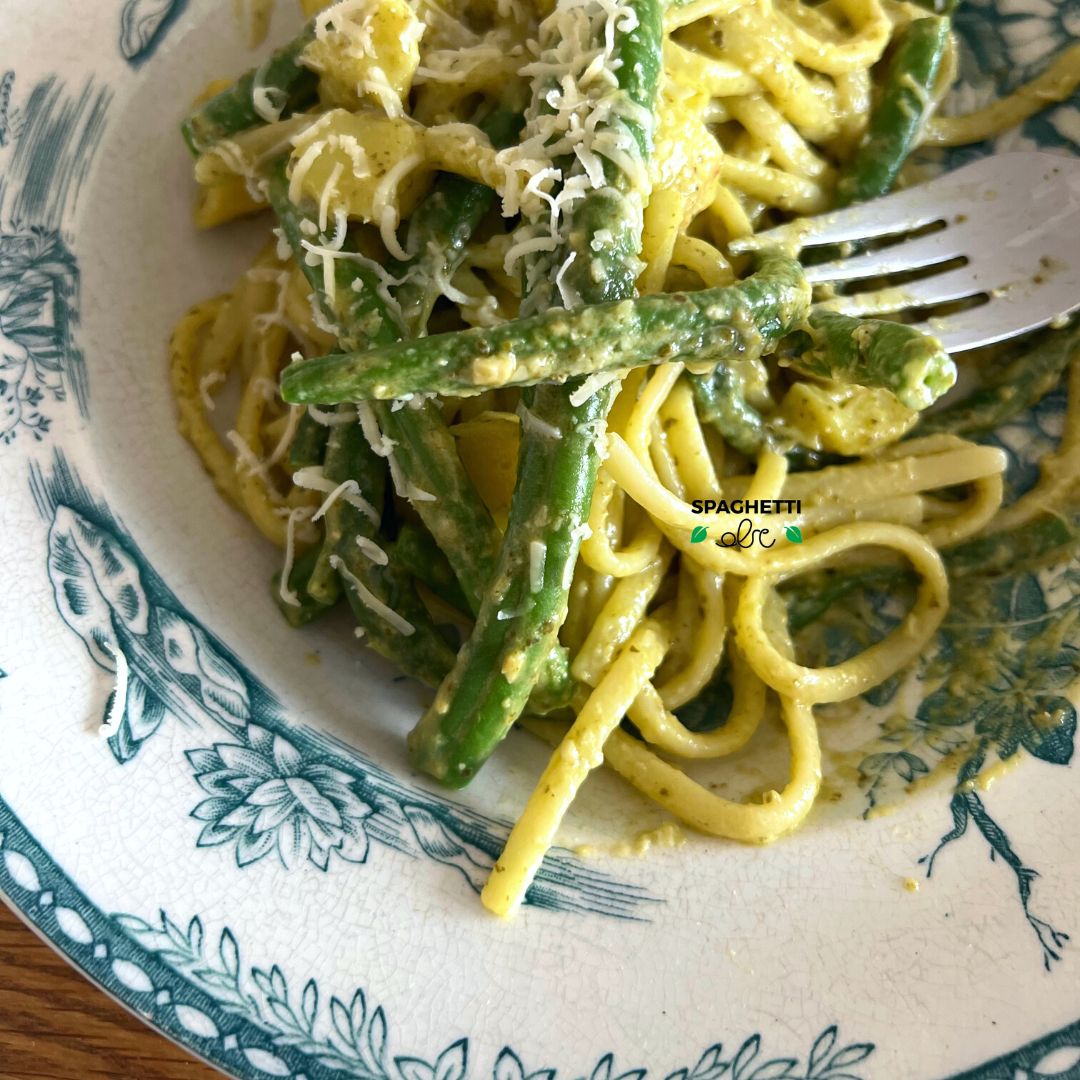Linguine with pesto, potatoes and green beans

The idea of crushing aromatic herbs with garlic, cheese and oil was already known to the ancient Romans: in the 1st century AD, in Columella’s book “De re rustica,” we find the recipe for moretum, a mortar-processed sauce, which we might call the ancestor of our pesto (read more about it on Tavola Mediterranea).
The first traces, however, of the Genova-style pesto we know, appear in regional Ligurian cookbooks from the late 1800s.
Since then, until the present day, the recipe has been perfected, so much so that it has been codified by the Pesto Consortium, which was created to protect this preparation of Italian cuisine (here is the original recipe from the Consortium).
The most classic pairing of pesto is with pasta (trofie, trenette, linguine or spaghetti), but it is a tradition in Genova to also add boiled potatoes in chunks and green beans, to have a richer and more nutritious dish that pays homage to the summer vegetable garden and its fruits.
Here is the recipe
Ingredients for 2 persons
180 g of linguine
15 g fresh basil leaves
7 g pine nuts
30 g grated Parmigiano Reggiano
20 g grated aged pecorino cheese
1 clove of garlic
50 g green beans
100 g potatoes
100 ml extra virgin olive oil
Salt and black pepper to taste
Time: 30 minutes
Let’s cook!
Wash the basil leaves and dry them with a clean tea towel.
Pound it in a mortar with the pine nuts, garlic, oil, a pinch of salt and cheeses until you have a smooth sauce. If you don’t have a mortar, use an immersion blender, using two cautions:
– keep the blades in the freezer for at least half an hour
– blend the ingredients a little at a time, using the pulse button.
Doing so will prevent the pesto from oxidizing and blackening (it should remain bright green).
Keep the pesto aside, tightly covered.
Boil the diced potatoes and chopped green beans in salted water; this will take about 20 minutes.
When they are almost ready, add the linguine to the same pot.
Drain the pasta and vegetables and mix them in a bowl with some of the cooking water and a drizzle of raw olive oil.
Serve with more Parmigiano.
